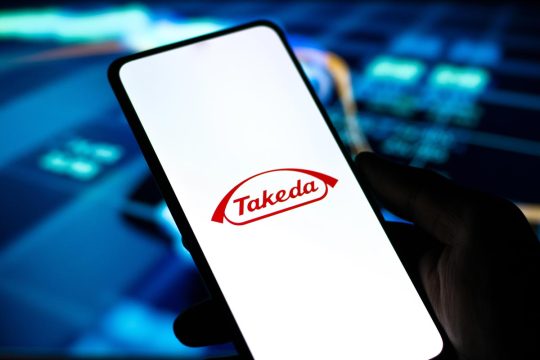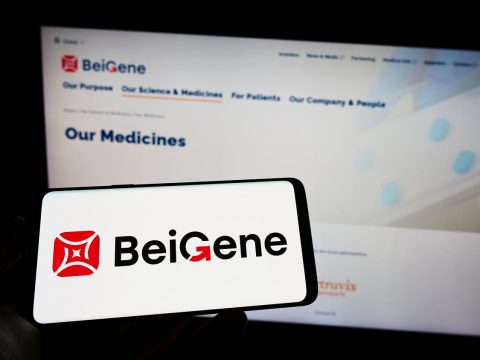Advertisment
Phase III clinical data from BE VIVID and BE READY studies of bimekizumab presented at AAD for treatment of psoriasis.- UCB.
UCB, announced the first presentations of data from the Phase III clinical development program of bimekizumab, its investigational IL-17A and IL-17F inhibitor, as part of a virtual session for the American Academy of Dermatology (AAD) 2020 Annual Meeting. Patients treated with bimekizumab achieved superior skin clearance in both the BE VIVID and BE READY Phase III studies, compared to those who received placebo or Stelara (ustekinumab).
The majority of bimekizumab-treated patients in both studies achieved total skin clearance at week 16 and maintained their response for a year, as measured by the Psoriasis Area and Severity Index (PASI) 100 and Investigator Global Assessment (IGA) response of 0.Both studies evaluated the efficacy and safety of bimekizumab in adults with moderate-to-severe plaque psoriasis and met their co-primary superiority endpoints of at least a 90 percent improvement in the Psoriasis Area and Severity Index (PASI 90) and IGA response of clear or almost clear skin (IGA 0/1) at week 16, versus placebo. The safety and efficacy of bimekizumab have not been established and it is not approved by any regulatory authority worldwide.
BE VIVID RESULTS : In BE VIVID, the pivotal Phase III study with active comparator ustekinumab, patients treated with bimekizumab 320 mg every four weeks (Q4W) achieved significantly superior skin clearance than those receiving placebo or ustekinumab at week 16, as measured by PASI 90 and IGA 0/1.1 At the same time point, 58.6 percent of bimekizumab-treated patients achieved PASI 100 compared to 20.9 percent of ustekinumab-treated patients. PASI 90 rates (all comparisons p<0.001) were – bimekizumab: 85.0 percent; ustekinumab: 49.7 percent; placebo: 4.8 percent; IGA 0/1 rates were – bimekizumab: 84.1 percent; ustekinumab: 53.4 percent; placebo: 4.8 percent. Among patients who received one dose of bimekizumab, 76.9 percent achieved PASI 75 by week 4, versus 15.3 percent of ustekinumab-treated patients and 2.4 percent of patients who received placebo. BE VIVID results at week 52 show that bimekizumab sustained skin clearance, demonstrating superiority to ustekinumab. PASI 100 was achieved by 64.2 percent of patients who received bimekizumab compared with 38 percent of those who received ustekinumab (nominal p<0.001). A significantly greater proportion of bimekizumab-treated patients also achieved IGA 0/1 and PASI 90 at week 52 compared with ustekinumab-treated patients (77.9 percent versus 60.7 percent, and 81.6 percent versus 55.8 percent, respectively; p<0.001). In the bimekizumab treatment arm, 38.9 percent of patients had received prior biologic therapy with an anti-TNF, anti-IL-17, or anti-IL-23 versus 38.7 percent in the ustekinumab treatment arm.
The most frequently reported adverse events with bimekizumab through week 52 in BE VIVID were nasopharyngitis (21.8 percent), oral candidiasis (15.2 percent), and upper respiratory tract infections (9.1 percent).1 The majority of adverse events were mild to moderate in intensity. The vast majority of patients (94.7 percent) did not discontinue treatment. The incidence of serious treatment-emergent adverse events (TEAEs) was 6.1 percent with bimekizumab versus 7.4 percent with ustekinumab at week 52.
BE READY RESULTS ;In BE READY, the pivotal Phase III randomized withdrawal study, participants were randomized to bimekizumab 320mg Q4W or placebo for the first 16 weeks. Bimekizumab was superior to placebo in achieving PASI 90 and IGA 0/1 at week 16; over 90 percent of participants receiving bimekizumab achieved PASI 90 or IGA 0/1, while 68.2 percent achieved complete skin clearance (all p<0.001): PASI 90 (bimekizumab: 90.8 percent; placebo: 1.2 percent); IGA 0/1 (bimekizumab: 92.6 percent; placebo: 1.2 percent); PASI 100 (bimekizumab: 68.2 percent; placebo: 1.2 percent). In the second phase of the study, patients who had achieved at least a PASI 90 response at week 16 were re-randomized to receive continuous bimekizumab at two different dosing regimens (320 mg every four weeks or 320 mg every eight weeks) or to be withdrawn from treatment (placebo Q4W). Evaluating the effects of continuous therapy with bimekizumab at two different dosing regimens (Q4W and Q8W) versus randomized withdrawal found that maintenance of response was similar in the two bimekizumab treatment arms, with 86.8 percent of patients who received continuous bimekizumab 320 mg Q4W maintaining PASI 90 at week 56, compared to 91 percent who were switched to bimekizumab 320 mg Q8W and 16.2 percent of patients who were withdrawn.
In BE READY, the most frequently reported adverse events with bimekizumab between week 16 and week 56 were nasopharyngitis (10.4 percent for the Q4W group; 23 percent for the Q8W group), oral candidiasis (11.3 percent Q4W; 9.0 percent Q8W), and upper respiratory tract infections (11.3 percent Q4W; 8.0 percent Q8W). The majority of adverse events were mild to moderate in intensity. The vast majority of patients (100 percent Q4W; 98 percent Q8W) did not discontinue treatment.2 The incidence of serious TEAEs with bimekizumab was 4.7 percent for the Q4W group and 3.0 percent for the Q8W group versus 3.8 percent with placebo at week 56.
Phase IIb data from the BE ABLE 2 psoriasis study will also be presented virtually for AAD 2020 . These findings demonstrate bimekizumab’s durability of response from week 12 to week 60, further supporting the results of the bimekizumab Phase III psoriasis clinical program.





